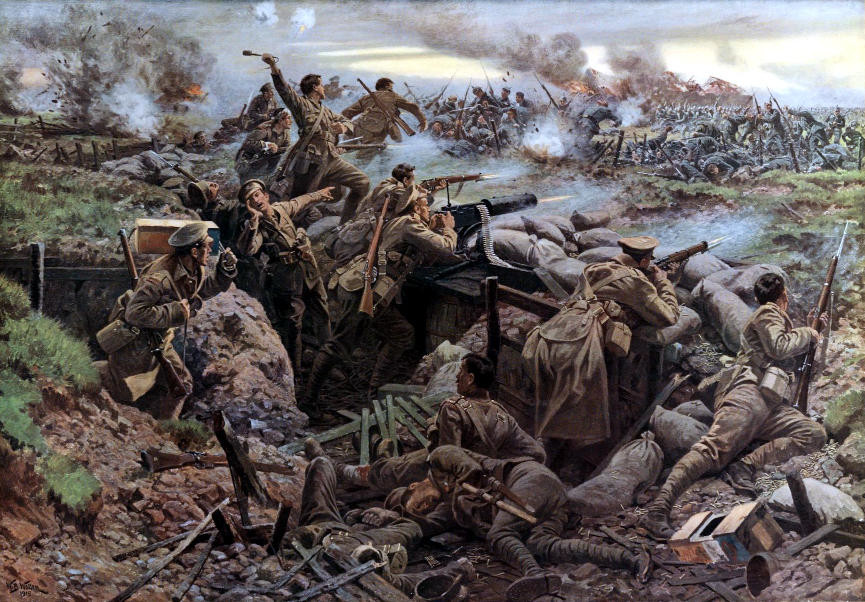
Ranks and Appointments
The topic of ranks and appointments during the great War can become complex. In part this was due to the very decentralized form of the pre-war militia, with Commanding Officers given considerable latitude concerning matters of ceremonial and uniforms. The outbreak of war presented new challenges. The new Canadian Expeditionary Force (CEF) would be expected to serve alongside and often under command of British troops. The immediate concern was to ensure that Canadian officers should be given status equivalent to their British regular army counterparts. Thus, except for the first contingent all officers in the CEF and all promotions were gazetted in England in the same manner as British Officers. In 1915 British Army Orders confirmed this equivalency of rank and seniority.
The second unique feature of CEF ranks was that they would have no bearing on ranks held in the Canadian Militia. This was not a uniquely Canadian solution. It was intended to ensure that the much smaller reserve forces not be overwhelmed by an influx of senior ranks in a period of post war downsizing. As an example, Arthur Currie was a Lieutenant Colonel in the Canadian Militia and remained so even when given command of a Brigade and the rank of Brigadier in the CEF. This approach also meant the confusing rank structure of the Militia was replaced by the rank structure of the British Army for all serving in the CEF. The most notable change was among Warrant Officers where the single Canadian Warrant rank was replaced with the British WO1 and WO2 system.
All this gave rise to the familiar soldiers song “Bless em all” with the best remembered verse “There’ll be no promotion this side of the ocean so cheer up me lads bless em all.”
The second, and perhaps more problematic question concerns appointments. In simple terms, rank determined how much you were paid and who was in the more senior position while appointment described the job. While this seems straightforward the common practice of the day for many positions was to refer to the individual by their appointment rather than their rank. For example, no one would ever call the Regimental Sergeant Major (an appointment) Warrant Officer First Class (WO1). In addition, most texts would refer to RSM Bloggins not WO1 Bloggins.
The third area that can often be confusing is the question of temporary or acting rank. It is perhaps useful to cite one example. The original Commanding Officer of Princess Patricia’s Canadian Light Infantry (PPCLI) was LCol Francis Farquhar, a British regular from the Coldstream Guards. He died of wounds at St Eloi on March 30th 1915. He was succeeded by LCol H.C. Buller of the Rifle Brigade, another British Officer who had been serving as a Captain and adjutant in the unit. He was promoted to the rank of acting LCol thus jumping over several Canadian Majors. He was wounded on May 4th and replaced by the unit second in command Major Hamilton Gault as commanding officer. Gault was in turn seriously wounded on May 8th before any acting rank could be promulgated. The same day he was replaced by Major Agar Adamson who was also wounded. When the PPCLI was finally withdrawn from the line now reduced to four officers and 150 men the officer commanding was Lt Hugh Niven. When trying to answer the question “Who commanded the PPCLI?” or any other element of the CEF it is important to distinguish whether the response should simply list those who were formally appointed or those who actually exercised command. In this example, only Farquhar and Buller had been formally appointed. Gault, Adamson and ultimately Niven were clearly exercising the duties of commanding officer.

Honourary Appointments were also common. These were not simply ceremonial as with today’s Honourary Colonels but rather to give appropriate status and pay to technical officer who would have no command authority except within the confines of their own area of expertise. Thus many units would have Honourary Captains or lieutenants as paymasters, medical officers or chaplains.
At the lower ranks, the issue can become even more confusing. While Colonels are always Colonels, Privates may also be called Gunner, Sapper, Trooper, Driver of Pioneer as equivalent rank and hold any of a dizzying array of appointments ranging from piper and drummer to saddler, shoe smith, wheeler and fifer.
The attached matrix is intended to provide some conformity on how terms of rank and appointment are used on the site.
| Rank | Abbreviation | Typical appointments |
|---|---|---|
| Lieutenant General | LGen | Corps Commander |
| Major General | MGen | Divisional Commander |
| Brigadier | Brig | Brigade Commander |
| Colonel | Col | |
| Lieutenant Colonel | LCol | Commanding officer, infantry battalion, artillery cavalry or engineer, or signals regiment. |
| Major | Maj | Officer commanding infantry company, artillery battery or engineer cavalry or signals squadron. Second in Command battalion or regiment. |
| Captain | Capt | Second in command company or artillery battery |
| Lieutenant | Lt | Platoon Commander |
| Second Lieutenant | 2Lt | Platoon Commander |
| Cadet | Cdt | Officer under training |
| Warrant Officer First Class | WO1 | Regimental Sergeant Major |
| Warrant Officer Second Class | WO2 | Company, Squadron or Battery Sergeant Major, Company Sgt Major Instructor. |
| Staff Sergeant or Colour Sergeant | SSgt | Company Quartermaster Sergeant (CQMS) Sgt Instructor, Provost Sgt, Band Sgt. Armourer Staff Sgt. |
| Sergeant | Sgt | Platoon second in command. |
| Corporal of Bombardier (Artillery). | Cpl, Bdr | Section or Troop Commander (Artillery). |
| Lance Corporal, Lance Bombardier (Artillery). | LCpl, LBdr | Section Second in command, saddler corporal, smith corporal, Corporal cook. |
| Private, gunner, sapper, Pioneer, Driver. | Pte, Gnr, Spr, Pnr, Dvr | Trumpeter, drummer, piper, saddle-maker, smith wheeler, carriage smith. |